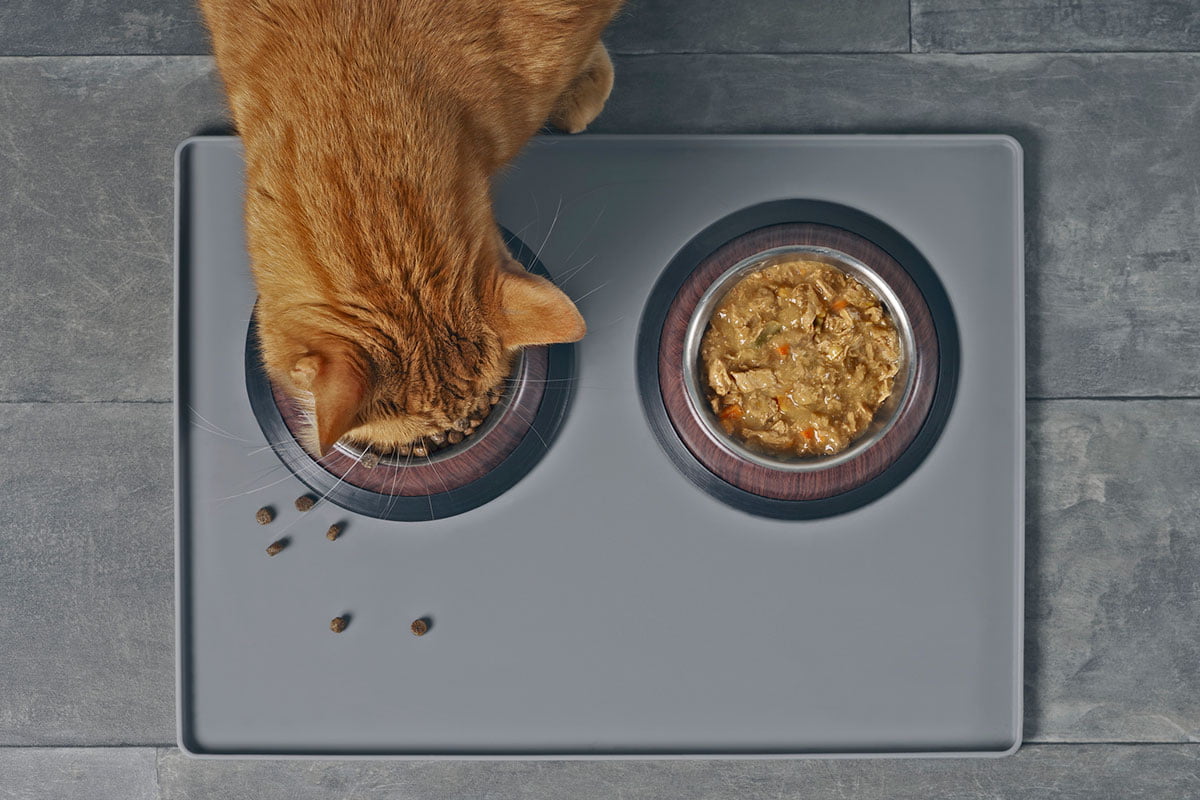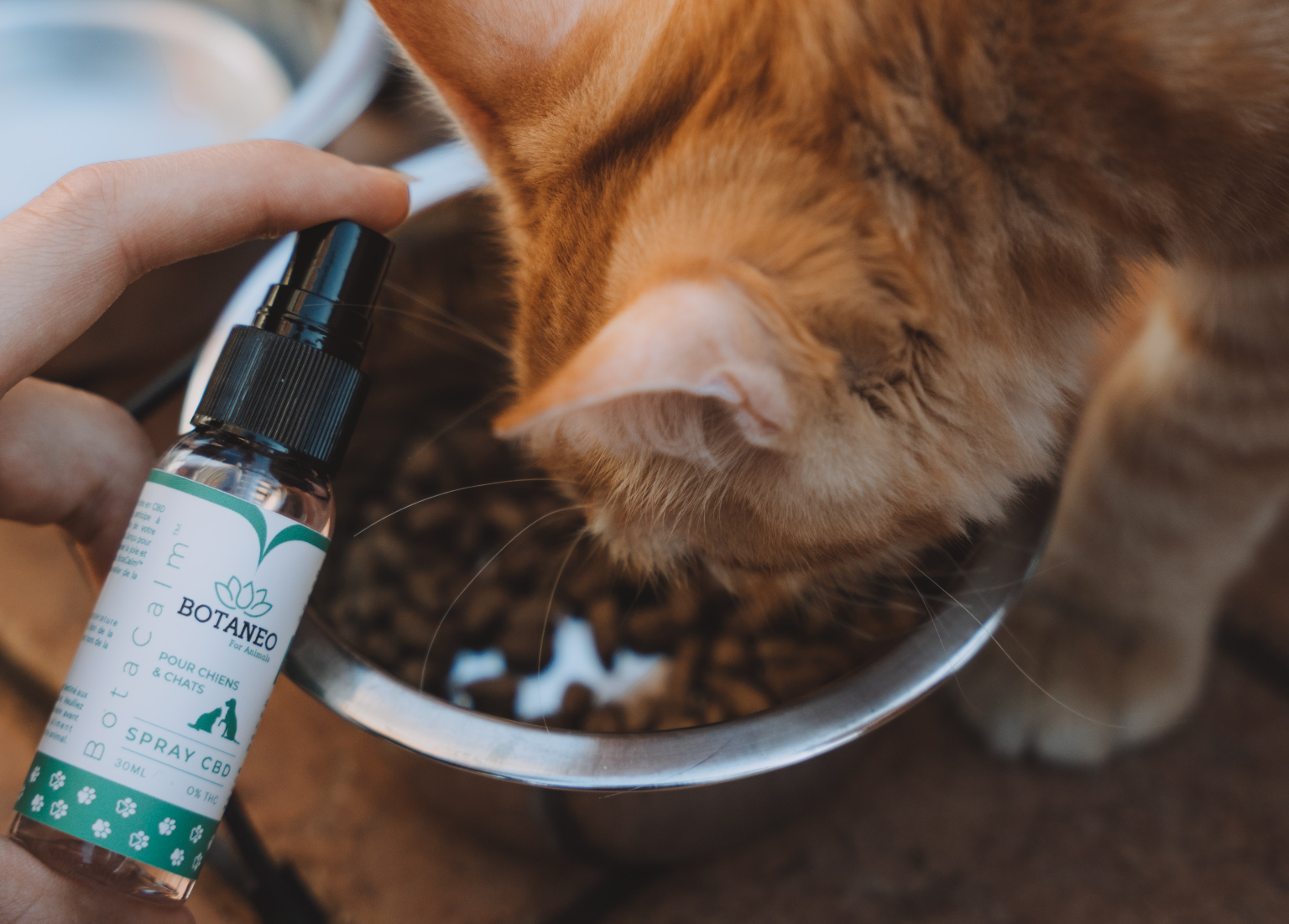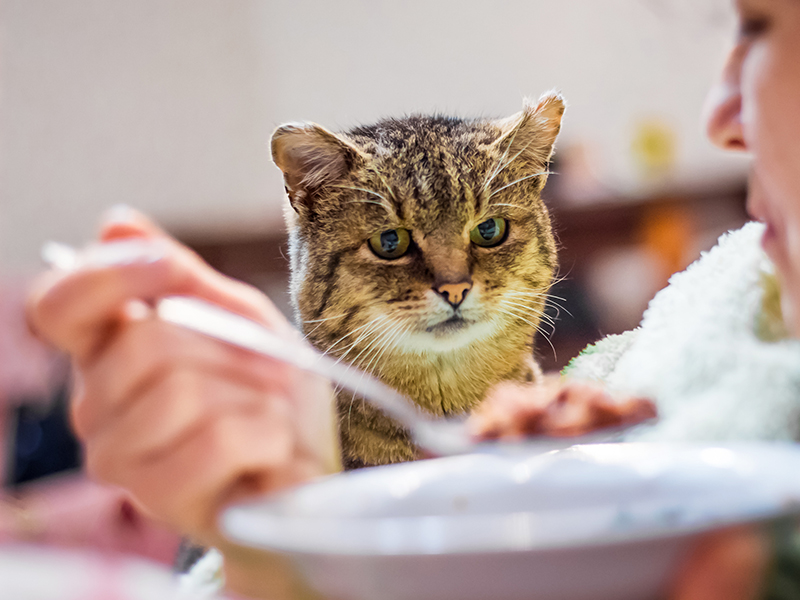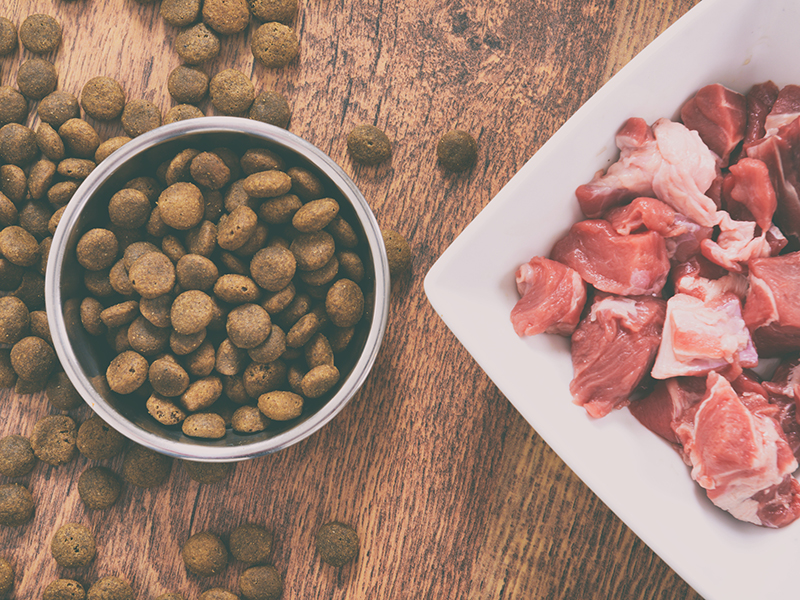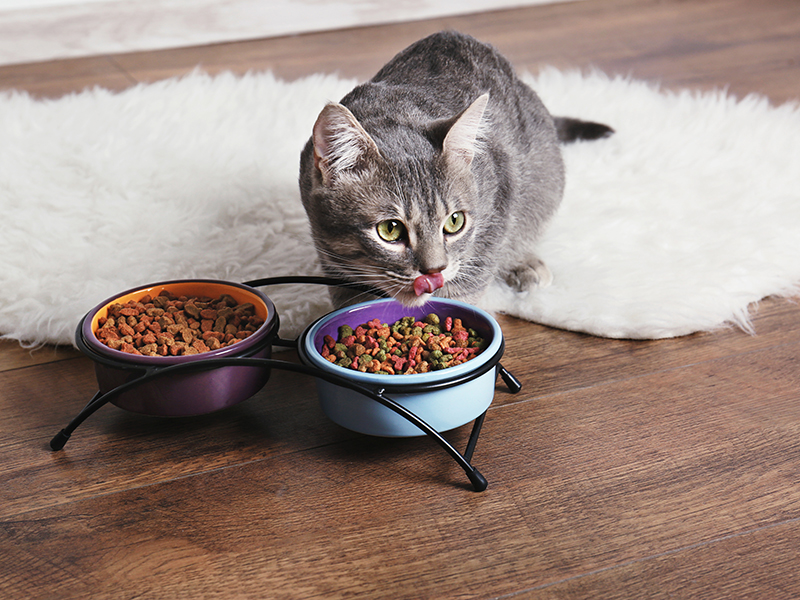Maybe you’ve just gotten your first kitten. Or rescued a stray. Maybe you’ve had cats for a while but now yours has some health issues and you want to find natural ways to support him. No matter what brought you here, we hope this article will help you decide what food might be best for your cat and your unique situation. Cat parents around the globe have often wondered, am I feeding my cat the right kind of food? What kind is best? Do I need to feed my cat both wet and dry food or can I choose just one type?
We are here to answer all of your cat feeding questions. In this article we’ll give you the pros and cons of both wet and dry cat food, we’ll tell you how to find a brand with quality ingredients, and we’ll also tell you what type of food may be best for yours and your cat’s unique circumstances.
Ready? Let’s dive in.
Why you should use dry cat food
Let’s start with the obvious. Dry cat food is a lot less gross. If you’ve used wet cat food, you know what I mean. It smells bad. It looks nasty. Sometimes feeding a cat can be just as gross as cleaning the litter box. Dry cat food lacks the Ewww factor, giving it a clear advantage right off the starting block.
Dry cat food involves a lot less mess. The chunks are packed tightly and don’t break apart. If it spills, you can easily pick it up. You may get a few crumbs but they are nothing your broom or vacuum can’t easily handle. Dry food is portable and convenient. You can keep it on the shelf and it really won’t spoil. You can leave it out all day, which means kitty can graze as much or as little as she likes, and the food will always be there for her. With dry food you don’t have to worry about feeding her on her schedule. She’s a real pain when she’s hungry and we know you try to avoid that at all costs. Being able to leave food out for her is crucial, and dry food can meet that need.
Dry food is more energy dense than wet food. This means that it enables your cat to consume a lot of calories quickly. If your cat is overweight this is not a benefit, but if you’ve rescued a scrawny looking stray, this might be what you’re looking for to fatten her up. Dry food is also far less expensive than wet food, so you can feed a lot of calories quickly and on the cheap. Owners of multiple cats rejoice, because dry food may be what you’re looking for.
To sum it up, dry cat food is easier to store. It’s easier to feed to your cats, and it creates less of a mess. It looks better and it smells better. It just seems more normal. Sounds like a winner!
There are some cons to feeding only dry food.

While dry food has more calories per ounce and more calories per dollar, it may not be the healthiest option for your cat. Dry food tends to be lower in fat and protein, and higher in carbs than wet food. This means it has fewer of the macronutrients that cats thrive on. Dry food also has a significantly lower water content than wet food, which may lead to dehydration if your cat isn’t seeking out their water bowl quite regularly. Cats don’t drink water the way dogs do, so if you’re only feeding her dry food, it’s likely she’s not getting enough. And because dry food is cheaper dollar-wise, it may be cheaper nutrient-wise too. Reading the nutrition labels is crucial, especially for consumers of dry food.
Now let’s talk about wet food.
We’ll start with the cons to feeding your cat wet food because there really aren’t that many. The main thing not to like about wet cat food is the ick factor. It smells like rancid tuna. The texture is really nasty. If you spill some it may leave behind a kind of greasy residue. It’s not nearly as easy to clean up as dry food. It’s just….gross.
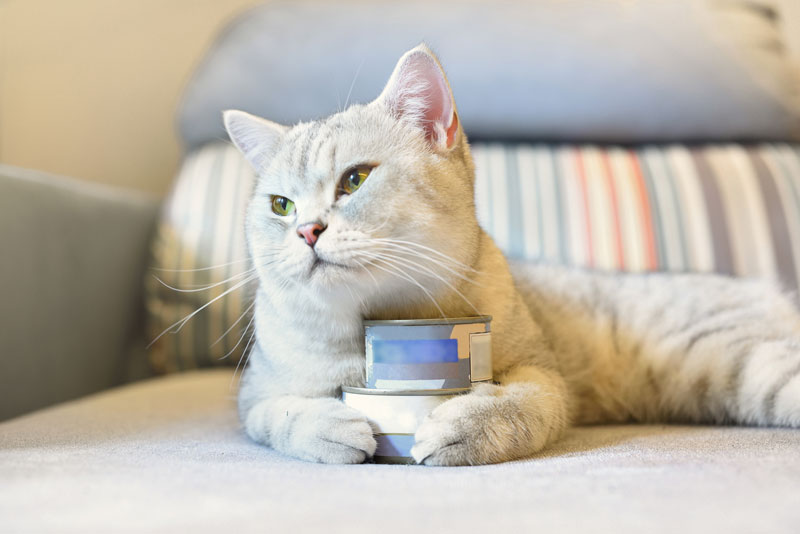
Wet food is not easy to feed. Wet food spoils more easily and needs to be refrigerated after it’s open, making it less portable and less convenient than dry food. You can only leave it out for four hours max before it goes bad, though some experts recommend not leaving it out for any time at all. Most cats are grazers, meaning that they don’t eat all at once. There is no meal time. They take a few bites here and there, slowly throughout the course of the day. If your cat grazes too slowly, such that a can of food isn’t finished within four hours, well then wet food may not work for you.
Wet food is also a lot more expensive than dry food. It’s especially painful to put out that expensive can of food and watch it sit there turning bad while your cat refuses to eat quick enough. It’s like when you toss all that organic produce you bought while thinking you’d start eating healthier. Except in that situation you have no one to blame but yourself. Now you’re blaming your cat for wasting your money and she shows no remorse. Ever.
Why you should feed your cat wet food
Although wet cat food is more expensive on a per serving basis, it is far superior for your cat’s nutritional needs. It’s so superior in fact, that the cost per nutrient is probably similar. So let’s talk about the best diet for your cat.
To start with, cats are carnivores. This may not have been obvious, but let’s think about the closest known relatives to house cats, which are big cats. Tigers, lions, cheetahs, and leopards all thrive on an animal-based diet. Likewise, your cat does too. Her diet should be made up primarily of animal products. Wet cat food reflects this need, in that it has a lot more meat. It generally contains a higher content of protein and fat and a lower ratio of carbohydrates, which better reflects the macrobiotic profile that your cat needs. Dry food with it’s higher carbohydrate and lower protein and fat ratio is less well suited to your cat’s diet.
Cats can be rather picky when it comes to drinking water. It’s not in their DNA to seek it out. This may be because in the wild cats go to great lengths to keep their food and water sources separate, or because they don’t trust stagnant sources of water. Or because they evolved from desert-dwelling ancestors. Or because they are super picky about the bowl. The internet is rife with theories but who ever really knows what a cat is thinking? Either way, they don’t drink very much, and they don’t have a thirst drive like dogs or humans do. If a bowl of water isn’t next to their food it’s very likely they won’t drink anything at all. Even if the water is there, they may not drink it. Cats do as they please.
The point is, your cat could be completely dehydrated to the point where it leads to health problems, but he would do nothing about it. Cats in the wild consume food that is roughly 60-70% water (such as mice). The hydration level in most dry cat foods is only 10-12%, but wet food contains 70-80% water. At roughly three-quarters water, wet food will provide adequate hydration for your cat, and you can stop worrying about that full water bowl. On the other hand, if your cat only eats dry food there’s a good possibility that he will become dehydrated because of it.
We are always encouraged to drink more water if we want to lose weight, because water makes us feel full without calories. The same is true for cats. Because wet cat food has such a high water content, it is a lot more filling than dry food too. That means the cat can eat less food but still feel full. This may be helpful if your cat has any weight issues.
What food is best for my cat?
Only you can decide what food works best for you. We’ll lay out some common issues cat owners may face in order to help you identify the best type for your cat.
How to choose a high quality cat food.
Let’s be honest. Cats are real jerks when they’re hungry. Quality food that contains proper nutrients and fewer artificial ingredients will sustain them longer. It will better support the health of their digestive system, urinary system, their coat and their overall health. When it comes to health, wet food is superior. However, it’s also expensive, gross, and inconvenient. Still, some experts say that the biggest feeding mistake you could make is feeding your cat only dry food. If you can’t get down with wet food all day long, try a mix of both types. Feeding your cat just one meal of wet food per day is preferable to none at all.
Cheaper foods generally contain a lot of fillers. This garbage doesn’t sustain them nutritionally. They get no benefit from that excess junk but it will cause them to gain excess weight. Our goal is to give them only what they need and none of the stuff they don’t.
Unfortunately, while a low price generally means low quality, a high price doesn’t always mean high quality. When choosing a cat food make sure to look at the label. One way to know if a food is high quality is if it has the American Association of Feed Control Officials (AAFCO) statement on it, indicating that the food is “complete and balanced”. The AAFCO does two levels of testing before certifying food as nutritionally balanced. They do a complete nutritional analysis, and they also do feeding tests with live animals to observe how the animal interacts with the food.
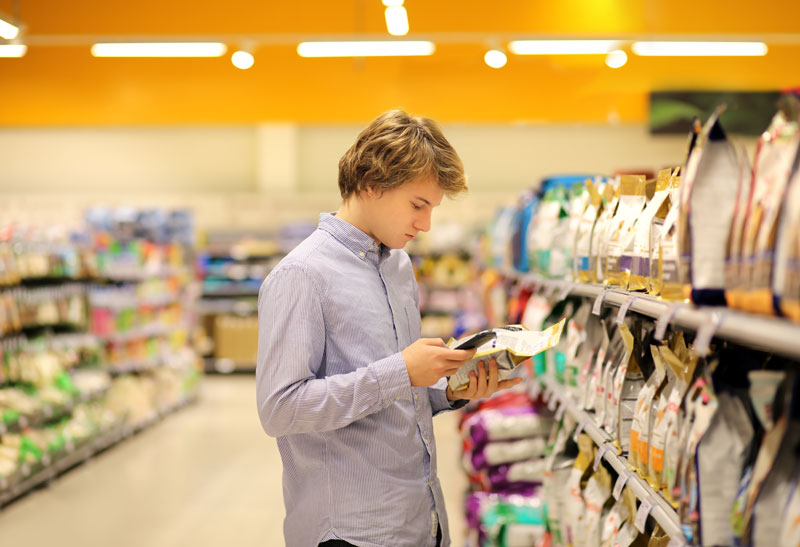
Before making your purchase check out the nutrients. You’re looking at macronutrients (i.e. fat, protein and carbohydrates) as well as micronutrients (i.e. vitamins and minerals). Evaluate your cats food the same way you would evaluate your own food. The first ingredients listed are generally the most plentiful. For cats, those first few ingredients should be some type of named animal product such as chicken, beef, or tuna. Stay away from generic terms like “meat”. Most cat foods do contain some carbohydrates but cats really don’t need any, nor do they need vegetables. Choose something with ingredients that you’ve heard of. Stay away from anything labeled as “by-products” or “animal digest”. Yuck.
Keep in mind that food is evaluated on something called a ‘dry matter basis” which means that wet food is actually evaluated while dry. This makes it difficult to compare nutrients on the label when you’re looking at dry vs. wet. For this reason it’s better to decide ahead of time whether you’ll be dry, wet, or a combination of both, and then only compare brands within the same type.
When evaluating a wet food, 70% water composition is optimal. This will provide enough water to adequately hydrate your cat but the remainder (30%) will provide your cat with the critical nutrients she needs to make it through the day.
Whichever type of food you choose, there are some things that you absolutely should never do when feeding your cat.
What should you never do?
The number one thing you should absolutely not do is putting your cat on a vegetarian or vegan diet. We know these diets are popular with humans however cats are natural carnivores. They require the proteins and amino acids in meat sources to survive. For example, the amino acid taurine is only found in animal products. Lack of adequate taurine puts cats at risk of losing their vision, experiencing heart problems, or even death.
Secondly, do not attempt to make cat food at home. It may seem fun in theory. However, most people forget that when a cat eats it’s natural prey, it eats the entire thing including meat and bones. The nutrients derived from eating bones are difficult to replicate in a homemade recipe from your kitchen.
The decision on whether to give your cat wet vs. dry cat food may seem confusing at first. Hopefully this article has helped you understand which type of food is better for your cat and why. A mix of both dry and wet may be the best option for most people. Contact us with any questions so we can help you make the right decision for your cat.

